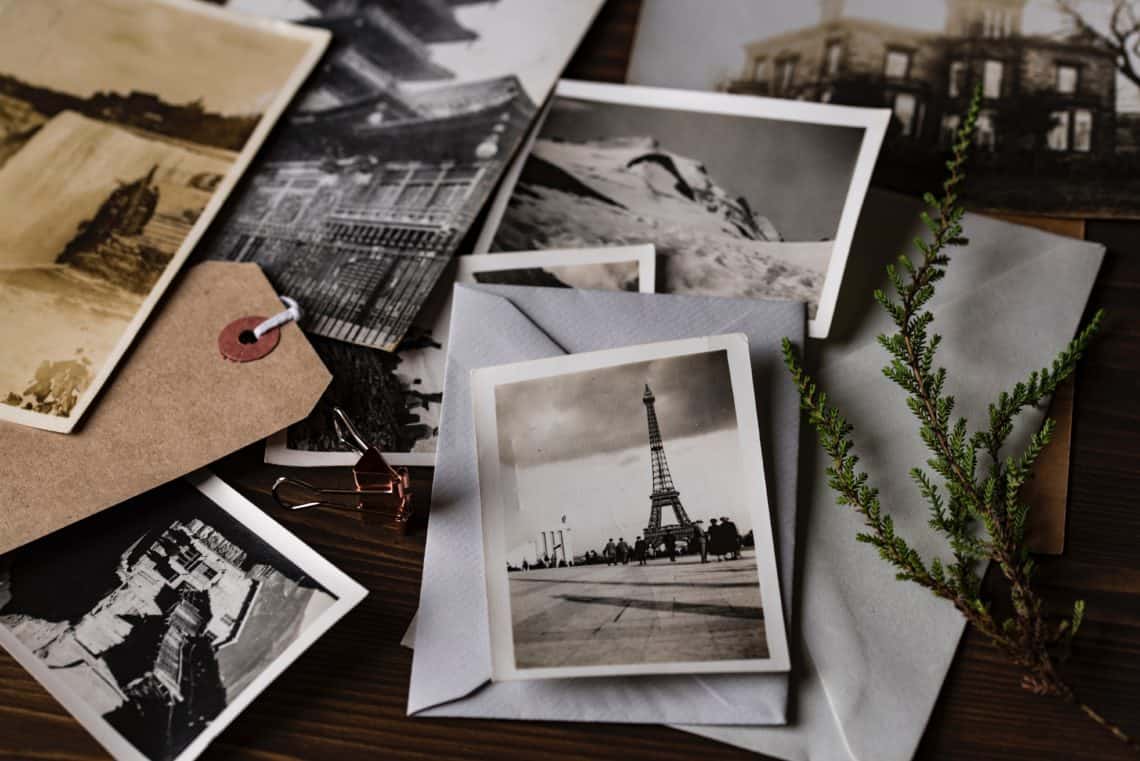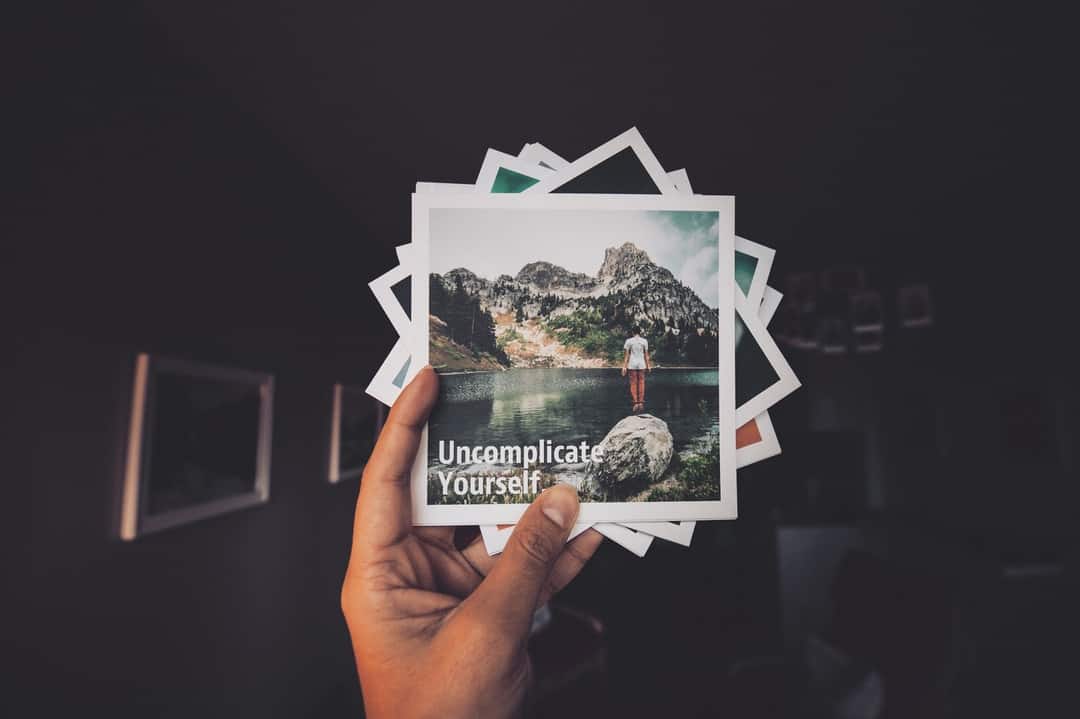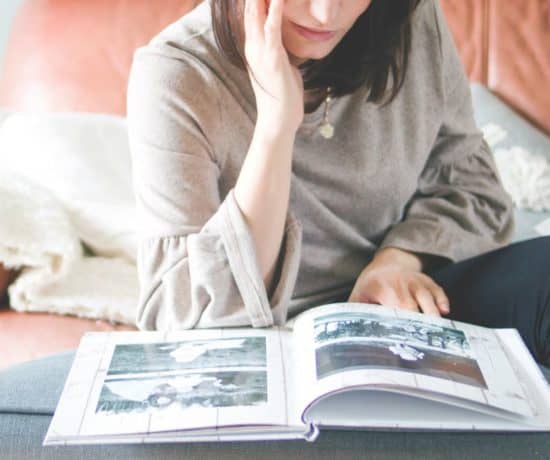Not a genealogist? That’s OK.. but don’t glance away just yet because I think you’ll find today’s post thought-provoking. You see, for a while now, I’ve been pondering what I can do to help my readers understand some of the core basics of the photo organizing process. In a nutshell, what steps are essential, and why? There are lots and lots of standards out there within the field of digital asset management, but much of it relates to metadata, and not necessarily to the process itself. The ones that do relate to the process are focused more on business strategies instead of being geared towards the individual consumer. But perhaps the GPS can help? Let’s find out!
What is the GPS?
First things first, let’s define what the GPS is all about! The GPS, short for Genealogical Proof Standard, is a set of best practices that guides the world’s genealogy researchers on their quests for the truth. It tells us how to look for quality sources, how to analyze those sources, and how to make logical conclusions based on them, so that future researchers can trust that our findings were sound and accurate. It’s the proof we need to submit to be credible and logical.
There are five elements to the GPS, as quoted from the Board of Certification for Genealogists (BCG):
-
reasonably exhaustive research;
-
complete, accurate citations to the source or sources of each information item;
-
tests—through processes of analysis and correlation—of all sources, information items, and evidence;
-
resolution of conflicts among evidence items; and
-
a soundly reasoned, coherently written conclusion.
A successful genealogy project will adhere to all of these five elements, and to all of the 83 standards within them. I can’t go over all of them in this post, so I recommend getting your hands on a copy of the book Genealogy Standards (compiled by the BCG), which outlines everything in detail. It’s a must-have on any family history bookshelf!
Why We Use the GPS in Genealogy
In a utopian world, we’d love to take your word for it. You did the research, and you came to a conclusion. But how can you prove that your conclusion is the correct one? Well, if you have adhered to the GPS and all of its standards, it’s a lot easier for us to believe you. In a world of falsehoods, incorrect information can snowball faster than we can catch up, so even though your conclusion may be the correct one, you must be able to prove it.
I always say that being a genealogist is kinda like being a lawyer because (just like a lawyer) you’re uncovering evidence and building a case, only in a different space and time. We all know that the more time passes, the harder it is to find evidence and because of that fact, the GPS is indispensable. It’s your guide to a fool-proof argument.
Want to understand the process better? Here is a Genealogy flow chart, courtesy of Marc McDermott over at GenealogyExplained.com
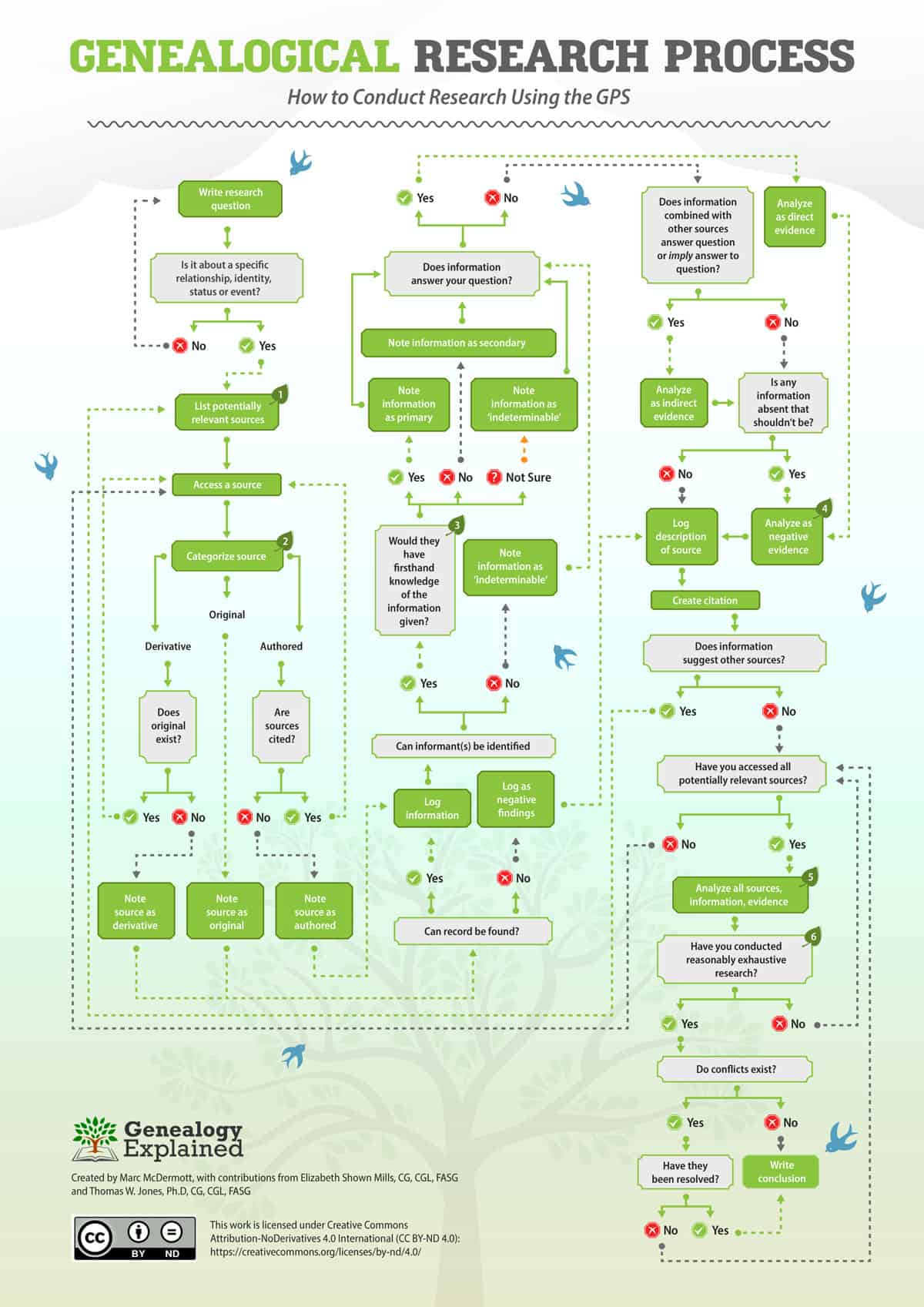
Thanks to Marc McDermott for lending us his handy GPS flow chart! Visit Marc over at GenealogyExplained.com
Can We Use the GPS in Photo Organizing?
OK, so the GPS is great for genealogy…but what does the it have to do with photo organizing? Good question.
Those of you who are regular readers of this blog know that I’m a big fan of taking best practices and systems that work elsewhere (in other industries), and applying them to photo organizing…. because why reinvent the wheel? If you’ll remember, I explained how to do that with short codes in this blog post here. Genealogy and photo organizing are two fields that are so closely related that I see them only as extensions of each other, so what works in genealogy should logically work in photo organizing as well. Right?
By the way, when I talk about applying the GPS to the field of photo organizing, I’m referring to the actual process of organizing and not about finding out more about a particular photo or story. That would be actual genealogy work where these standards would directly apply. I’m interested in exploring if we can apply some of the same standards to parts of the organizing process itself, so let’s find out!
GPS Element #1 – Reasonably Exhaustive Research
According to the BCG, the first guideline of the GPS tells us that we should do “reasonably exhaustive research” for evidence to ensure that we have information from a “wide range of high quality sources,” so as to minimize “the probability that undiscovered evidence will overturn a too-hasty conclusion.” Translation? We must look at all our sources up front to make sure that we have a complete picture of what’s going on. It’s not enough to just look at one or two sources because evidence might exist in another place that would completely turn your conclusion upside down once you find out about it.
A prime example of this would be to do a search for your ancestor in only one place, such as an online database, and completely ignore the local archives – despite the fact that most records have yet to be digitized. Can you imagine how much information you would miss out on if you only googled derivative sources and listened to family lore? Nope, you have to also look at those amazing original documents that were created during the same time your ancestor was alive, or your research report wouldn’t be very believable. Makes sense, right?
Applying This Concept to Photo Organizing
When I hear “reasonably exhaustive research,” my mind immediately skips to the gathering phase of organizing, which is normally the first step in the process. How about if we take the reference of “high-quality sources” as encouragement to look through ALL of our devices (and services) to find ALL of our photos instead of just checking that one computer or phone? Perhaps you have more photos on a camera card somewhere? Maybe you have more photos in the cloud? How can you be sure that you have the best version of your photo if you look only look in one place? I think it’s fair to say that a thorough intake process will avoid speed bumps further down the road.
You could also apply this concept to choosing a photo management workflow. What if I started working with a new client, set up her workflow in MacPhotos, only to later find out that she’s planning on buying a PC instead? I’d have to start all over again because I didn’t ask enough questions up front. What if I assumed that she only had one computer, when she in fact has two more with photos on them? Again, it’s not enough to look at only one device, and ask only one question. You have to look at all devices to figure out where exactly files are stored and how they move from one place to another. Don’t you agree?
Seems like “Reasonably exhaustive research” fits perfectly here.
GPS Element #2 – Complete & Accurate Source Citations
The second element of the GPS reminds us to include complete and accurate source citations for all of our sources. The BCG explains that this practice “demonstrates the extent of the search and the quality of the sources,” meaning that it signals to others that we’ve paid attention to element #1 with our “reasonably exhaustive research.”
Element #2 also leaves other researchers a trail of breadcrumbs so they can understand our sources, should they ever want to look them up themselves. The BCG points out that the “inability to replicate the research casts doubt on the conclusion.” In other words, If we don’t cite our sources, we might as well have made it all up. This comes back to the credibility of the researcher, who just might be the most upstanding person in the world, but who isn’t necessarily showing it by omitting citations. Yes, it’s a lot of work, but is the work worth doing if it’s not credible?
Applying This Concept to Photo Organizing
In photo organizing, we could easily apply this element to the storytelling part of the job. If we lighten up on the citation part and substitute the word “story” for “source,” this could correspond to the metadata that we embed into every image. Where did the photo come from? Who is in it? Who took it? and why is it in this collection? The story is an integral part of the photo itself; it’s its reason for being. We all know that without the story, the photo becomes irrelevant.
Can we cite our stories? Why, yes!
[insert dramatic pause]
I feel like this standard encourages us to have a “complete” metadata descriptions for each photo containing “accurate” information. Now, I know what you’re thinking…”There she goes again with all of her academic procedures…,” but hear me out because I mean it in the best way possible. I’m not saying that you need to spend hours and hours working on each and every photo. And it doesn’t mean you need to go overboard with 100,000 keywords. Nope, it can be much simpler that that. A good example would be using a well thought out (i.e. controlled) keyword vocabulary instead of just entering random keywords. Making sure that you’re doing it well and in a structured way would be enough!
Scanning Something? Pay Attention to GPS Element #2!
In scanning prep, citing your sources is exceedingly important in order to protect yourself. My friend Jackie Jade (who is a full-time lawyer, by the way) wrote a guest post for me on copyright and how it might affect your photo scanning project. In that article, she mentions the fair use doctrine and goes over how to evaluate the origin of your photo to see if that might apply to your situation. Nevertheless, respecting the copyright holder by having the permission to scan and by indicating (in the metadata) who took a photo is something we should all strive to do. Perhaps it’s not as necessary for personal collections, but it’s a standard that I feel should be upheld by those who scan professionally, and by those of you who will be scanning heritage photos. Not to mention, it’s the right thing to do. We all need to respect each other’s work.
I would encourage each and every one of you to key in complete metadata descriptions and stories into your digital photos to ensure that they stay safe. The pro of having complete metadata fields embedded into your photos will help future-proof your collection, and your mini-me’s will have a ton if information at their fingertips (hence the breadcrumbs analogy). Yes, it’s a lot of work, but let’s remember the word “reasonably.” 🙂
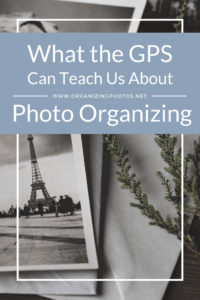
I’m a Perfect Pinnable!
GPS Element #3 – Analysis & Correlation
The third best practice in the GPS is that all of the source information and the evidence has been “skillfully correlated.” This practice “facilitates sound interpretation of the data contributed by each source” and “ensures that the conclusion reflects all the evidence.” What did you hear in that sentence? I heard sort and organize. I heard them say that it’s not just about one piece of information, it’s about how it all fits together.
In genealogy, we must analyze our evidence, and look for those little clues that lead us to our next question. We must also look at everything as a whole, and assess whether or not we can weave those individual threads we find into a full, thick blanket (without any holes in it). We consider all angles, and all possibilities. Yes, it’s about what’s there, but it’s also about what’s NOT there. What’s missing that normally could be expected to be there? Remember the flat-as-a-card brick-building metaphor in My Cousin Vinnie? This is it!
Applying This Standard to Photo Organizing
This is a concept worth pondering when choosing how to sort, organize, and store your photos. We analyze all the photos by sorting them, and then we correlate them by organizing them. And we want to do this as “skillfully” as possible by carefully selecting our tools, i.e. our photo storage systems / organizing software. How can we make the system complete? How can we make sure there aren’t any holes in it? Well, we can do that by analyzing it, and by looking for those “must-have” features that we need to keep our photos safe.
As you’ll find out in several upcoming blog posts, there are many differences you have to take into consideration when choosing a photo organizing software because of how they treat your photos. Some programs lock your photo into managed databases; others strip the metadata from the photos [*sigh* along with me here]. This is something most people discover only when they try to migrate their photos, which is why I let this standard guide me in evaluating my would-be system in depth before I start using it. Perhaps you will do the same?
GPS Element #4 – Resolution of Conflict
The fourth best practice in the GPS standard is the “resolution of conflicts among evidence items.” According to the BCG, this “substantiates the conclusion’s credibility” because “if conflicting evidence is not resolved, a credible conclusion is not possible.” In other words, you must compare. Comparisons often lead to sound conclusions.
An example from the field of genealogy would be if you were to find two different birth dates for the same person. Without comparing the evidence you have and trying to figure out why there are two dates, you cannot come to a “credible conclusion.” Sometimes that does happens, and if it does, we acknowledge the situation. On occasion, there are two pieces of evidence that are equally credible, at which point you just have to conclude that you cannot determine which is the correct one unless new evidence presents itself. And that’s perfectly valid. However, in many cases, analyzing the information in front of you will let you resolve that conflict in a meaningful way. And if we can do that, we should.
Applying This Standard to Photo Organizing
Do you think we can apply this standard to towards the de-duplication process? I think we can – without a doubt. As you know, it’s very important to get rid of the duplicates, the bad shots, the poor angles, the unflattering selfies, and all these other “just in case I forget the milk” snapshots that really have no place in our photo collections. We must curate our photo collections, so that we highlight the best of the best. In my e-course DPO PRO, I explain this concept as “Masterpiece Thinking.” Think quality over quantity.
By comparing two pieces of information (in this case, photos), we can come to a sound conclusion as to which ones to keep. We can look at the size, resolution, clarity, angles, metadata, lighting, or any other criteria in order to evaluate the quality of our photos. It’s only by doing this that we can curate. Evaluating your “evidence” will let you make better choices on what to keep and what to delete, and that’s good news because decisions are much easier to make when you can adequately compare. Comparison if one of your best weapons against indecision. So go forth, and run that de-duplication app!
GPS Element #5 – A Sound Conclusion
The final guideline in the GPS tells us that we should strive to have a “soundly reasoned, coherently written conclusion.” In genealogy, it’s great if you publish your findings because they can be stepping stones for other researchers who might be looking into the same family. This collaborative spirit is one of the things I really like about the genealogy community. When you start tracing your lineage, you quickly realize that we’re all connected, and it’s only a matter of who, when, and where. The bigger picture starts to reveal itself. I think it’s wonderful that we can all work together to preserve as many stories as possible. Two brains are usually better than one.
However, in order for our findings to be taken seriously, we have to show some common sense. We have to demonstrate that our reasoning is logical, and free from “bias, preconception, or inadequate appreciation of the evidence.” Others should be able to follow our train of thought and come to the same conclusion. If it’s just you, there’s something wrong.
Can we make this standard fashionable again? Even if you’re not publishing your findings, you should have some sort of “sound conclusion,” don’t you think? Otherwise, you run the risk of people not taking you seriously. For good reason.
Applying this Concept to Photo Organizing
We can liken this element to writing down and compiling the stories of our lives, i.e. creating projects. Let’s remember why we take photos in the first place – it’s to enjoy them later, and to share them with friends and family members! If we don’t look at them again, there’s really no point in keeping them. That’s why I love to motivate people to get started organizing their photos. It’s to make sure that we keep the stories alive.
This standard is obviously geared towards research reports, so I don’t want the words “coherently written” to scare you. That’s just a fancy way of saying people should ‘get it.’ It means that anyone who is not involved should be able to read your story, and understand it. As I mentioned in this blog post about what inspired me a long time ago, your stories might not be appreciated in your lifetime, but could be life-changing in another. In fact, I want to point out that your project could take almost any form. It doesn’t actually have to be “written.” I propose that we use the word “documented” instead when we apply this element to photo organizing. You can create a photo book, a slideshow, or a family documentary – as long as the stories are preserved. Set your creativity free, but do something with your memories!
Here’s My Soundly Reasoned, Coherently Written Conclusion
It seems that the basic concepts of the GPS fit in pretty well with photo organizing (or any organizing situation, for that matter). Wouldn’t you agree?
We must do “reasonably exhaustive research” to find all of our photos (and the right DPH). We should embed metadata into our photos completely and accurately when possible. We should analyze and correlate (read sort and organize) our photos skillfully to ensure that our system will work. We should resolve conflicts by de-duplicating our collections, and we should try our very best to present photo projects that others can use and enjoy. Let’s leave no stone unturned in the search for quality. Let’s thoroughly research our available options before we draw conclusions. And yes, although this all sounds like a lot of work, let’s once again keep in mind the keyword “reasonably.” 😉
Tell Me, Readers: How do you interpret the GPS? Let’s Discuss!

